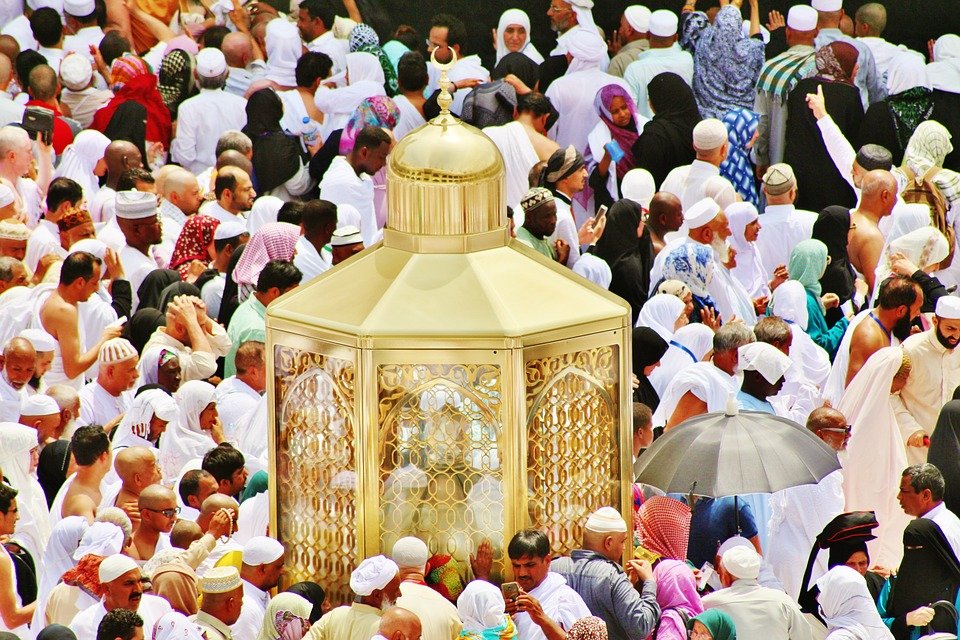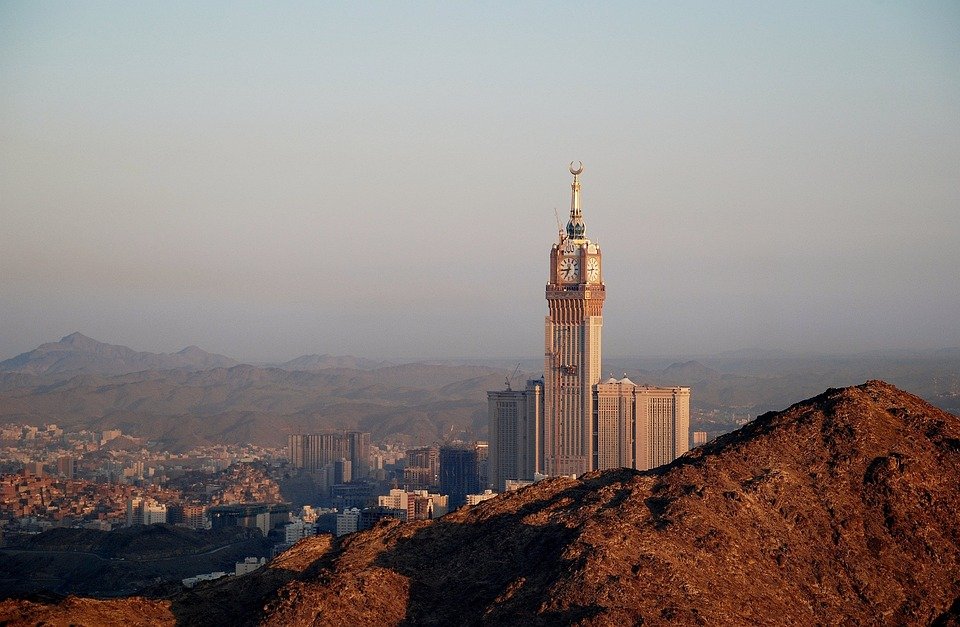You are here to read: Who Took Hajj to Makkah: Journey of Faith and Devotion – A Thoughtfully Written Guide Offering Spiritual Wisdom and Travel Advice for Every Pilgrim who is going on holy journey of Hajj or Umrah.
When searching for information about “who took hajj to Makkah,” you may find yourself curious about the diverse individuals and communities who undertake this profound pilgrimage. This article serves as an Islamic informational guide that sheds light on the various people who journey to Makkah to fulfill this important religious obligation. I promise you will find a comprehensive resource that not only celebrates the sacred act of Hajj but also highlights the stories and motivations of those who take Hajj to Makkah, reflecting their deep faith and commitment.
In my opinion, understanding who took Hajj to Makkah enriches our appreciation of this significant spiritual event. Each person’s experience adds a unique layer to the collective meaning of Hajj, making it a truly communal act of worship. We take pride in our expertise, built over nine years in the Umrah and Makkah, Madinah travel field since 2016. As you read this article, you’ll see why exploring “Who Took Hajj to Makkah: Journey of Faith and Devotion” goes beyond mere statistics; it invites us to reflect on our own beliefs and the shared values of millions around the globe.
Who Took Hajj to Makkah: Journey of Faith and Devotion
The Essence of Hajj
Hajj is an extraordinary pilgrimage that captures the hearts of millions. Every year, Muslims from every corner of the globe assemble in Makkah to fulfill a sacred obligation. This journey encapsulates loyalty and devotion, setting it apart from any other experience. I believe the essence of Hajj lies in its ability to bring people together, transcending language, nationality, and cultural backgrounds.
The trip to Makkah provides a unique sense of purpose and community. Each pilgrim, known as a Hajji, engages in acts of worship that purify the soul. Throughout the pilgrimage, everyone participates in rituals such as Tawaf, circling the Kaaba, and standing at Arafat, which are deeply significant and rich in history. It’s a profound reminder that beyond our everyday lives, there exists a larger spiritual mission we all share.
The Historical Roots
The history of Hajj traces back to the time of the Prophet Ibrahim (Abraham). According to Islamic tradition, he and his wife, Hagar, traveled to Makkah at God’s command. While they faced severe trials, their faith never wavered. This commitment established a legacy, making Hajj essential for Muslims today. I think it’s fascinating how the past influences our present rituals, connecting us to this ancient narrative.
When Ibrahim and Hagar were in the barren desert, they searched for water for their infant son, Ismail. Their perseverance and resilience are what ultimately led to the miraculous discovery of the Zamzam well. This oasis signifies hope and survival, and today, it remains a vital component of the pilgrimage. Joining thousands at this revered site, pilgrims feel as if they are part of a timeless story, making their faith even more robust.
The Pilgrim’s Path
To many, the path to Makkah is not just physical; it represents a spiritual journey filled with emotion. Prior to embarking, individuals prepare mentally and spiritually, reflecting on their intentions. I feel this preparation makes a significant difference in how pilgrims experience Hajj. It’s like getting ready for a performance where every detail matters.
You're at the middle of this awesome post at AirlinkHajjandUmrah.com through: Who Took Hajj to Makkah: Journey of Faith and Devotion. Keep reading, it gets better!
During the pilgrimage, each step taken holds significance. From donning simple white garments, symbolizing equality, to engaging in acts of worship, each moment carries weight. The atmosphere is charged with devotion and unity, forming an unbreakable bond among pilgrims. I often think about how this collective dedication makes the experience even more special, fostering a sense of belonging and affirmation.
Rituals and Ceremonies
Hajj is replete with various rituals, each meticulously designed to evoke spiritual awakening. One of the significant rites is standing at Arafat on the Day of Arafah. Pilgrims gather on this plain, praying and asking for forgiveness. I believe this moment creates immense spiritual clarity as individuals reflect on their lives and seek a deep connection with God.
Then, there’s the act of Tawaf, where participants circle the Kaaba seven times. This act symbolizes unity among believers worshiping one God. The intricate movements in this ritual not only engage the body but also invigorate the spirit. I think the collective atmosphere, filled with chants and prayers, enhances the energy and connection felt during the pilgrimage. Each moment spent engaging in these rituals deepens the commitment and faith of the pilgrims.
A Community of Believers
Hajj offers a unique platform for Muslims to bond. Gathering with fellow pilgrims fosters a sense of community often absent in daily life. I feel this connection serves as a powerful reminder of our shared beliefs. The diversity of cultures and backgrounds enriches the experience, making the pilgrimage not just a personal journey but a communal celebration of faith.
As pilgrims share stories and traditions, they create friendships that may last a lifetime. This aspect of Hajj is transformative. Whether exchanging smiles with someone from halfway across the globe or helping a fellow believer navigate through the rituals, every interaction reinforces the idea that we are part of something larger than ourselves. The bonds formed during Hajj transcend borders, cultures, and languages, emphasizing the universal spirit of Islam.
The Impact of Hajj
The journey of Hajj leaves a lasting impression on those who partake. Individuals often return changed, infused with a renewed sense of purpose. I think this transformation happens because the experience allows for deep introspection and connection with God. The acts of supplication and reflection quiet the mind, leading to clarity in life’s goals and priorities.
In my opinion, the influence of Hajj extends beyond the pilgrimage itself. Many pilgrims feel compelled to embody the values learned during the rites: kindness, compassion, and generosity. This ripple effect can inspire others to adopt these principles, creating a more harmonious community. The lessons learned during Hajj resonate long after the journey ends, encouraging individuals to lead lives filled with gratitude and empathy.
Conclusion: A Life-Changing Experience
In conclusion, the journey of Hajj to Makkah is a remarkable testament of faith and devotion. This pilgrimage, rich with history and ritual, unites Muslims worldwide in a unique celebration of spirituality. I consider the lessons learned and the bonds forged during Hajj to be invaluable treasures that pilgrims carry into their everyday lives.
As we reflect on who took Hajj to Makkah, the answer reveals itself; it’s a journey undertaken by believers united in their quest for faith. Each individual, whether in the past or today, contributes to this extensive tapestry, weaving a story that echoes through generations. I hope that one day, everyone gets a chance to experience the profound spirituality of Hajj, enriching their hearts and souls.
That wraps up Who Took Hajj to Makkah: Journey of Faith and Devotion. Thanks for sticking with us till here! Share this: Who Took Hajj to Makkah: Journey of Faith and Devotion with your friends.
Check our homepage at Air Link Hajj & Umrah for more awesome updates.
Some interesting posts are: 1: Umrah Mubarak, 2: When is Umrah closed 2026?, 3: When does Umrah start after Hajj 2026?
Mushu, an experienced Saudi Arabia traveler and writer, shares insightful tips and spiritual reflections to enhance Hajj and Umrah journeys for fellow pilgrims. He has been to Makkah and Madina from 2016 to 2023 many times and his posts will reflect this.







